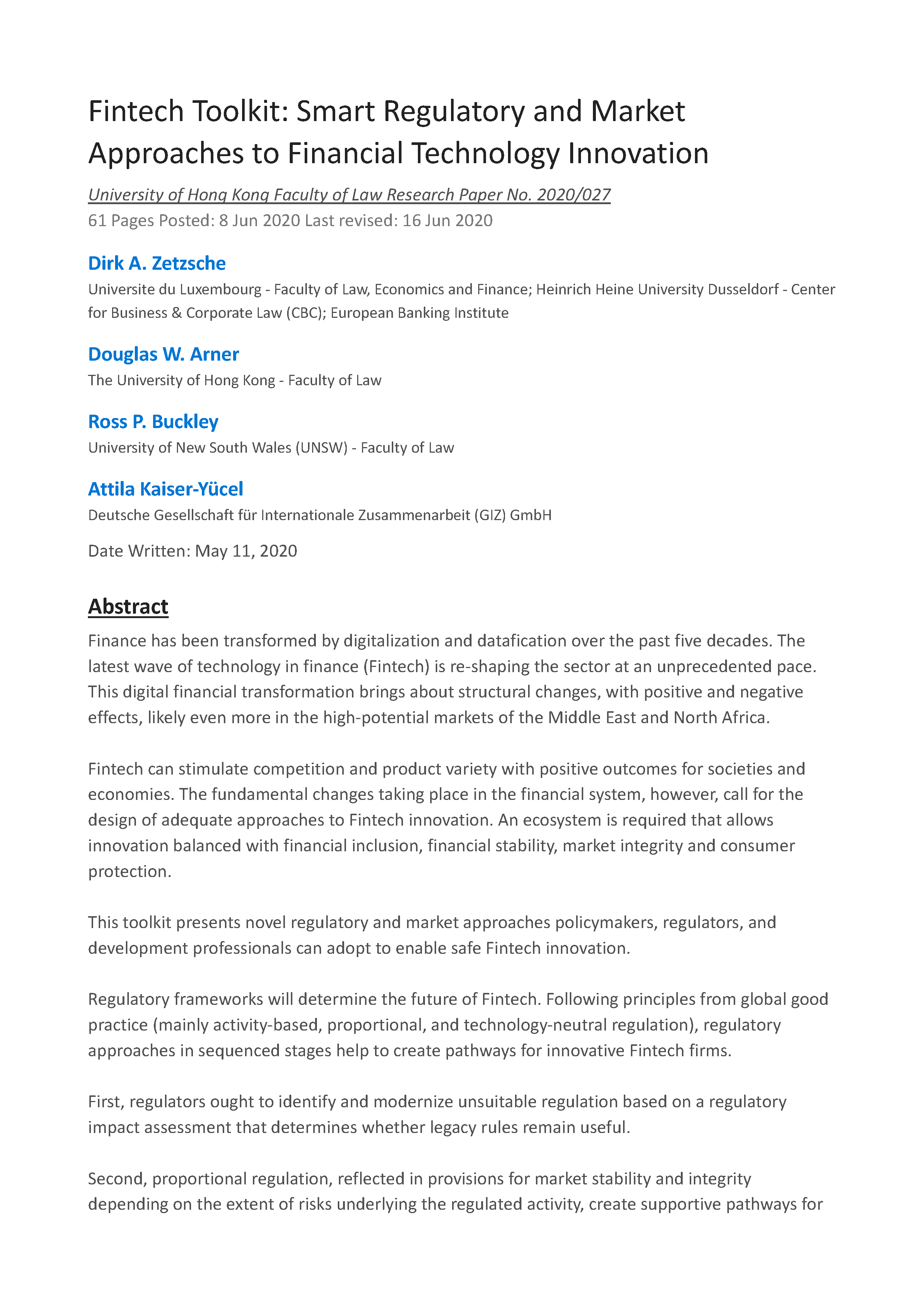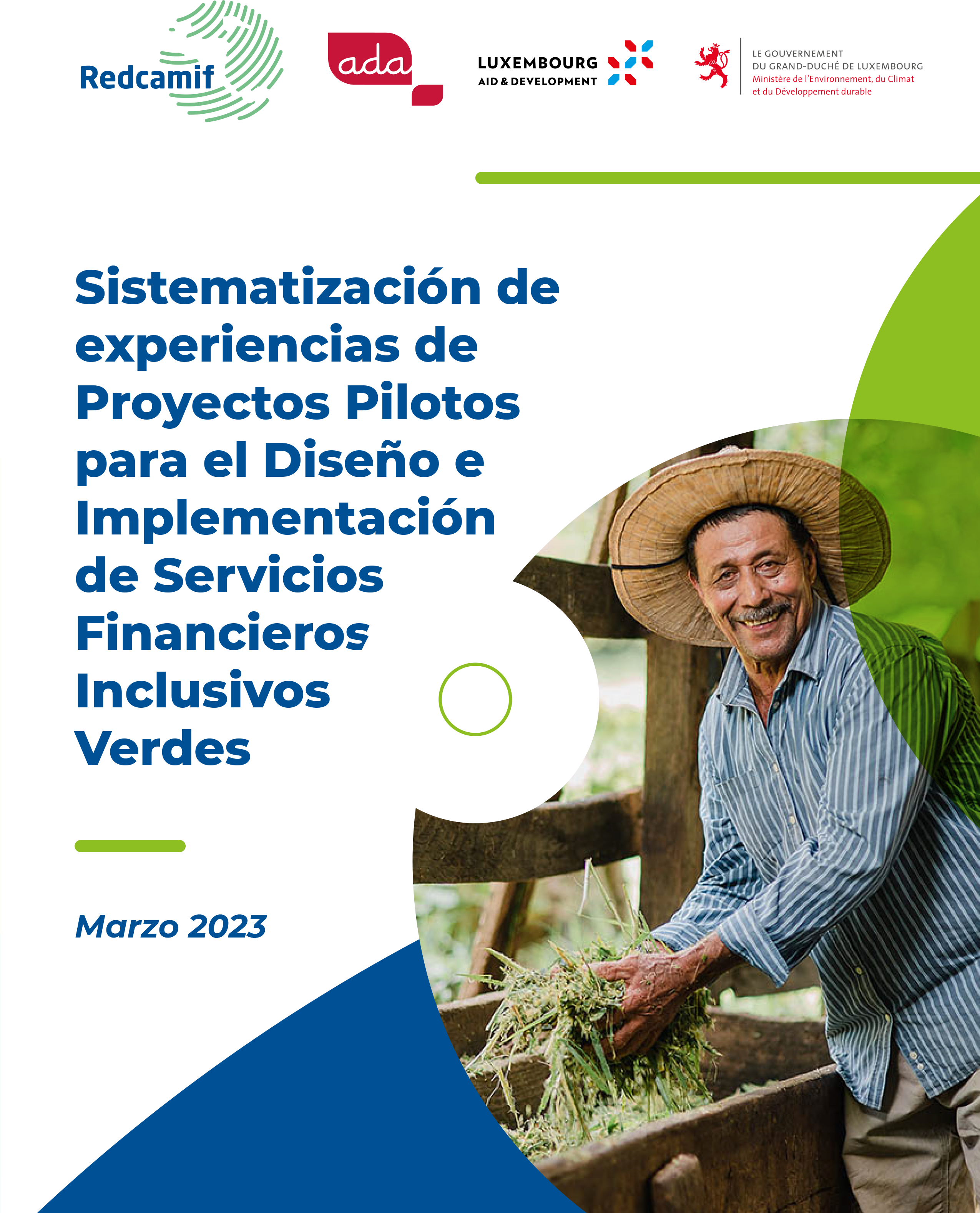Fintech toolkit smart regulatory and market approaches to financial technology innovation

Author: Dirk A. Zetzsche, Douglas W. Arner, Ross P. Buckley, Attila Kaiser-Yücel
Editor: University of Hong Kong
Publication date: 16-11-2020
Language: English
Format: PDF
Finance has been transformed by digitalization and datafication over the past five decades. The latest wave of technology in finance (Fintech) is re-shaping the sector at an unprecedented pace. This digital financial transformation brings about structural changes, with positive and negative effects, likely even more in the high-potential markets of the Middle East and North Africa.
Fintech can stimulate competition and product variety with positive outcomes for societies and economies. The fundamental changes taking place in the financial system, however, call for the design of adequate approaches to Fintech innovation. An ecosystem is required that allows innovation balanced with financial inclusion, financial stability, market integrity and consumer protection.
This toolkit presents novel regulatory and market approaches policymakers, regulators, and development professionals can adopt to enable safe Fintech innovation.
Regulatory frameworks will determine the future of Fintech. Following principles from global good practice (mainly activity-based, proportional, and technology-neutral regulation), regulatory approaches in sequenced stages help to create pathways for innovative Fintech firms.
First, regulators ought to identify and modernize unsuitable regulation based on a regulatory impact assessment that determines whether legacy rules remain useful.
Second, proportional regulation, reflected in provisions for market stability and integrity depending on the extent of risks underlying the regulated activity, create supportive pathways for new, particularly inclusive non-bank financial services.
Third, an Innovation Hub with experts of the regulatory authority is best suited to guide Fintech firms through the regulatory maze, yield valuable insights into market innovations, and assess possibilities of dispensation.
Fourth, testing and piloting regimes allow to apply leniency in a wait-and-see or test-and-learn approach to assist innovative firms. Authorities can further decide to tolerate innovations by licensed institutions and possibly by start-ups by extending on a case-by-case basis waivers or no-action-letters which declare certain activities as permissible or suspend certain rules.
Fifth, a regulatory sandbox, which standardizes the scope of testing and piloting, allows regulators to create a tightly defined safe space for granting dispensation from specific regulatory requirements for innovative firms that qualify.
Sixth, restricted licences allow feasible innovative firms to further develop their client base and financial and operational resources in a controlled manner.
Seventh, a full licence is essential for innovative firms as size requires and permits. Over these stages, as regulatory rigour and costs increase so tend to do Fintech firms’ maturity and ability to cope with risks and compliance, while maintaining a level playing field for licensed entities.
Demand and supply side factors will eventually propel innovative entrepreneurship and Fintech growth. Market approaches to Fintech innovation combine the support of financial and digital literacy in the population, cybersecurity capacities in the sector, acceleration programmes and investor-friendliness in the business environment, and technology clusters or digital centres in public-private- academic partnerships.
Sequenced reforms that are informed by global good practise, responsive to the local context and that contribute to regionally consistent frameworks, are policymakers best pick in support of an enabling ecosystem for Fintech. Concerted efforts will enable innovative financial service providers to tap the market and scale as well as Fintech to be beneficial for financial inclusion, competition and economic development across the region.




